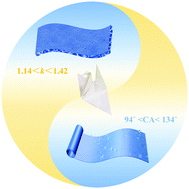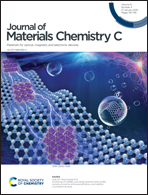Porous fluorinated polyarylene ether nitrile as ultralow permittivity dielectrics used under humid environment†
Abstract
Dielectric materials demonstrating ultralow permittivity, excellent mechanical property and durability under humid environment are highly demanded for the rapid development of 5G communication systems. Herein, a series of porous fluorinated polyarylene ether nitrile (FPEN) films having ultralow permittivity and excellent mechanical property that can be used under moisture environment are prepared by a delayed phase inversion approach. Due to the introduction of low molar polarity fluorinated substituents and porous structures, the porous FPEN films show ultralow dielectric constant of lower than 1.40 at 1 kHz and hydrophobic surface with the water contact angle higher than 90°. In addition, the porous FPEN films also exhibit an ultralow dielectric constant (<1.42 at 1 kHz) even when placed in a humid environment with a relative humidity of 80% for 72 h. The porous FPEN films demonstrate elongation at break higher than 32%, specific modulus higher than 1260 MPa cm3 g−1, excellent flexibility and foldability. These outstanding properties including the ultralow dielectric properties, hydrophobicity, flexibility, foldability and others facilitate the application of porous FPEN films as 5G communication system dielectrics.

- This article is part of the themed collection: Journal of Materials Chemistry C HOT Papers


 Please wait while we load your content...
Please wait while we load your content...